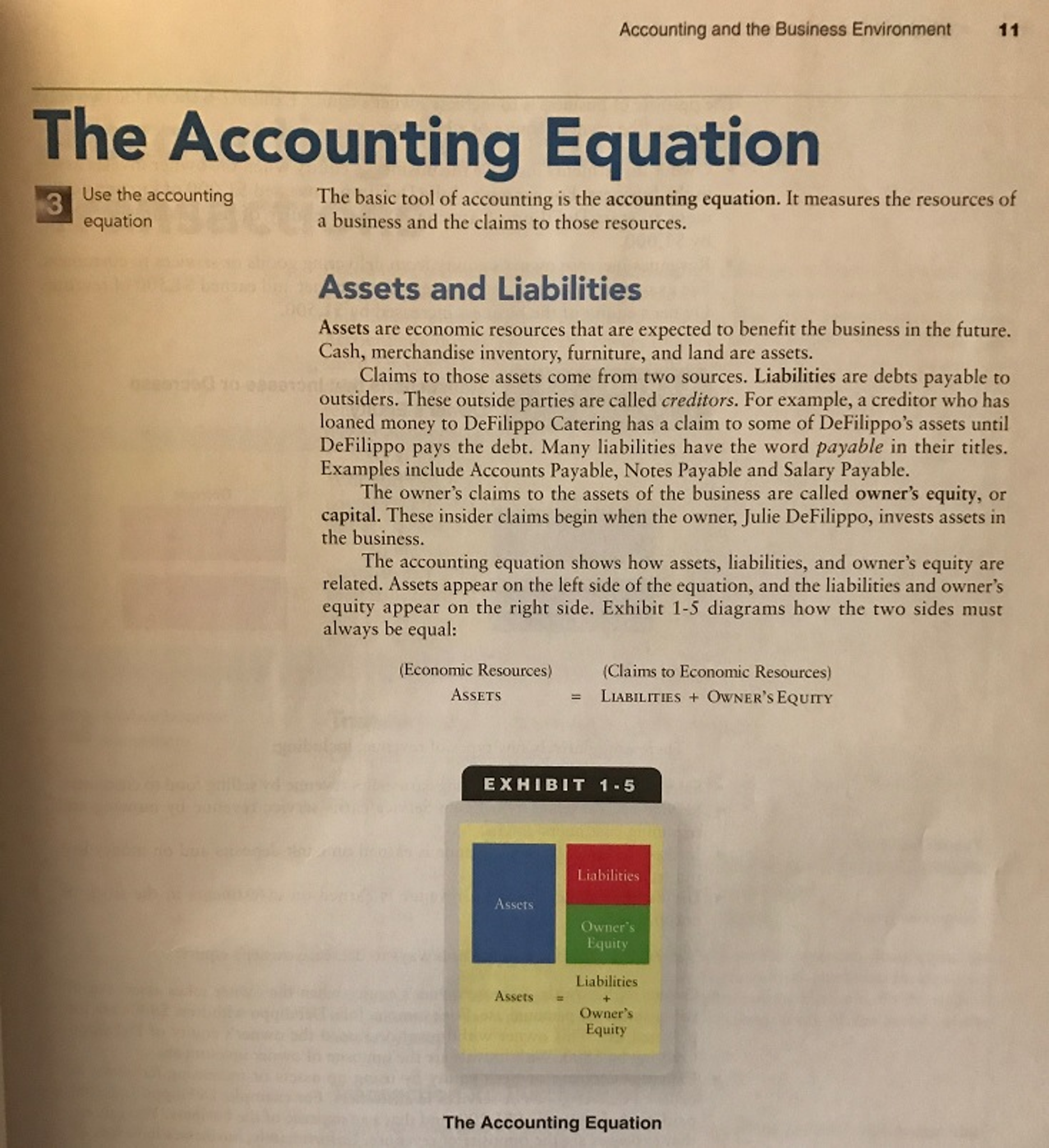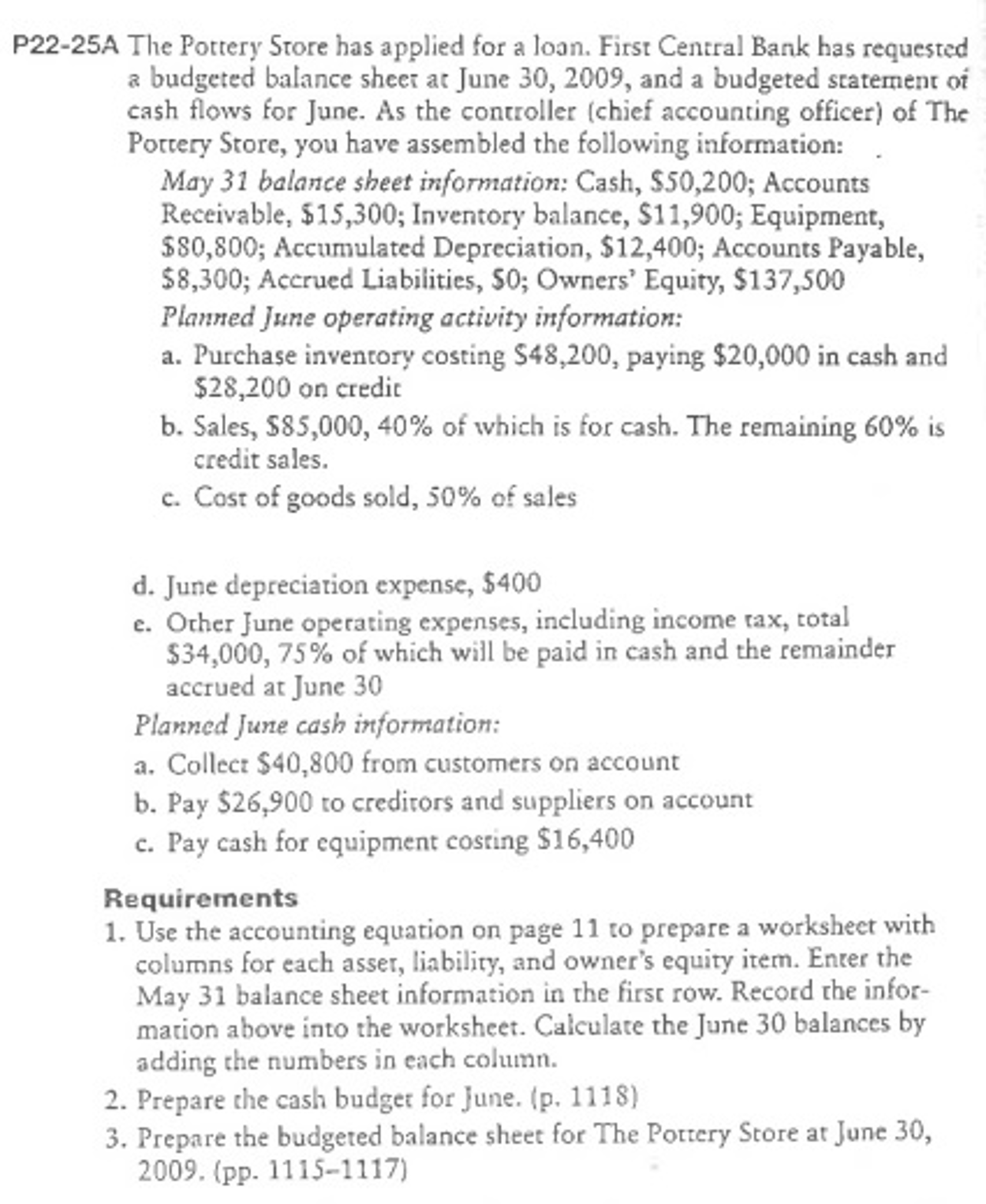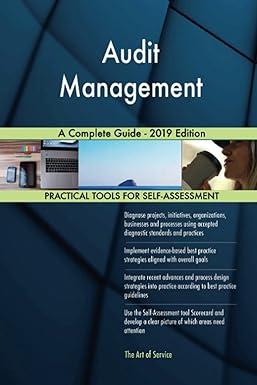*This is the page 11 Accounting Equation the question below refers to


The basic tool of accounting is the accounting equation. It measures the resources of equation a business and the claims to those resources. Assets are economic resources that are expected to benefit the business in the future. Cash, merchandise inventory, furniture, and land are assets. Claims to those assets come from two sources. Liabilities are debts payable to outsiders. These outside parties are called creditors. For example, a creditor who has loaned money to DeFilippo Catering has a claim to some of DeFilippo's assets until DeFilippo pays the debt. Many liabilities have the word payable in their titles. Examples include Accounts Payable, Notes Payable and Salary Payable. The owner's claims to the assets of the business are called owner's equity, or capital. These insider claims begin when the owner, Julie DeFilippo, invests assets in the business. The accounting equation shows how assets, liabilities, and owner's equity are related. Assets appear on the left side of the equation, and the liabilities and owner's equity appear on the right side. Exhibit 1-5 diagrams how the two sides must always be equal: The Pottery Store has applied for a loan. First Central Bank has requested a budgeted balance sheet ac June 30, 2009, and a budgeted statement of cash flows for June. As the controller (chief accounting officer) of The Pottery Store, you have assembled the following information: May 31 balance sheet information: Cash, $50, 200; Accounts Receivable, $15, 300; Inventory balance, $11, 900; Equipment, $S0, S00; Accumulated Depreciation, $12, 400; Accounts Payable, $8, 300; Accrued Liabilities, $0; Owners' Equity, $137, 500 Planned June operating activity information: Purchase inventory costing $48, 200, paying $20,000 in cash and $28, 200 on credit Sales, $85,000, 40% of which is for cash. The remaining 60% is credit sales. Cost of goods sold, 50% of sales d. June depreciation expense, $400 Other June operating expenses, including income tax, total $34,000, 75% of which will be paid in cash and the remainder accrued at June 30 Planned June cash information: Collect $40, 800 from customers on account Pay $26, 900 to creditors and suppliers on account Pay cash for equipment costing $16, 400 Use the accounting equation on page 11 to prepare a worksheet with columns for each asset, liability, and owner's equity item. Enter the May 31 balance sheet information in the first row. Record the information above into the worksheet. Calculate the June 30 balances by adding the numbers in each column. Prepare the cash budget for June. (p. 111 8) Prepare the budgeted balance sheet for The Pottery Store at June 30, 2009. (pp. 1115-1117)








